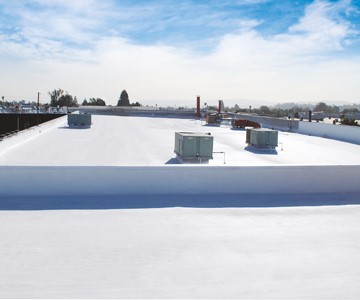Ing. Karl Borg
Technical Consultancy Department – JMV Building Solutions
JM Vassallo Vibro Steel Ltd.

Whether you’re a seasoned expert in the field of waterproofing, a developer or simply an uninformed home owner with little to no knowledge about how a typical Maltese roof keeps the elements above it out, the way waterproofing works should be of interest to you.
The local context
Traditionally, Maltese roofs have always been flat. We are not accustomed to pitched roofs found in Northern countries, since our wet season is a relatively short and mild one. Consequently, many have believed the misconception that waterproofing shouldn’t be of any concern. Nevertheless, one fact cannot be negated: water needs to and will find its own way out some way or another.
What causes roof damage?
Stagnant water will always drain through cracks and crevices following the passage of least resistance, and unless we give waterproofing its deserved attention, our roofs will invariably leak. Sometimes the water ingress may manifest itself in wall or ceiling stains, mold growth, or literally running water. This issue can very well go unnoticed for several years, as the layers in the roof absorb the humidity, until eventually the damage is done and structural elements are affected such as rusting steel beams and/or spalling reinforcement in concrete.
What is waterproofing?
Waterproofing is the process which makes a structure resistant to the passage of water, in such a way that it remains unaffected by the ingress of water. Until recent years, waterproofing had been an afterthought, where concern only arose when water damage could be visible. Fortunately, over the years, this mentality has changed and more people are making waterproofing a priority for their building’s structural soundness.
Who takes care of the process?
It’s is of utmost importance that this process is designed, specified and executed by professionals. At every stage of the process, experts involved need to be educated on the various waterproofing systems available and construction methods found locally. They must also be knowledgeable about the related building trades, which directly affect or follow waterproofing. These include construction, plumbing, drainage, plastering and tiling. Said experts need to be trained (and ideally certified) in the products applied, and most importantly, experienced in the implementation of the process.
The importance of choosing waterproofing products judiciously
Clearly, waterproofing is not simply a question of choosing a product or a brand. The classification tree of waterproofing materials is too vast a labyrinth to enter unless one is educated and trained in the field. From concrete admixtures, injectable materials, brushable slurries, sprayable resins to bituminous membranes, synthetic membranes and mastic joint sealants. A professional waterproofing engineer is primarily concerned with the system, not the material. The selection of the material is a function which follows the specifications of the system.
A guarantee of quality products
The European Organisation of Technical Assessment (EOTA) provides a scientific and technological knowledge base in order to ensure fitness for use of a construction product. The organization provides technical assessments (ETAs) for products after assessing all characteristics and aspects for the use of the product, such as packaging, storage, transport, installation and maintenance. The specifier can therefore give his system a solid foundation by assuring that the end products are covered by an ETA.
Important questions to ask
The end client must always ask the right questions, to be equipped with the necessary knowledge about waterproofing. Therefore, be sure to ask the following questions:
- Which waterproofing system is being proposed by my engineer and why was it chosen instead of others?
- Will this waterproofing specification meet my requirements without failing (e.g. entertainment area, green roof, tiled area, BBQ area etc)
- Is the applicator trained and certified in the selected product?
- Is the product being specified backed by a European Technical Approval Guidelines (ETAG)?
Ultimately, whether you are a home owner or have a business premises, all you want is peace of mind that when it rains, no water comes in. To ensure this however, a solid and airtight waterproofing system must be applied.
If you would like to know more about our extensive range of waterproofing products available at JMV, contact us today by calling +35621467421, or send us an email on sales@jmvibro.com. Alternatively, you can even visit JMV Building Solutions on site. We’re located in Triq l-Imdina, Haz-Zebbug.